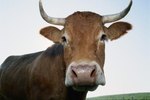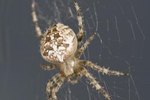
Females that have mammary glands are from the class Mammalia, or commonly called, mammals. All other animals do not have mammary glands. Female mammals produce milk for their offspring and thus spend a good portion of their time and energy raising their offspring. This investment helps ensure survival of the species.
Reptilia, or Reptiles and Birds
The class Reptilia, or Reptiles, includes snakes, lizards, crocodiles and their relatives, turtles and birds, as well as many extinct species, including dinosaurs. Originally thought to be a separate class, Aves, fossil record has proven that birds evolved from reptiles and share many features, thus making Aves a subclass. While many birds do take care of their young, none are able to provide milk.
A Ray of Hope: Ray-Finned Fishes or Actinopterygii
Actinopterygii is a big name for the most common vertebrate. Half of all vertebrate life is from the Actinopterygii class. About 22 percent of fish care for their young. The percentage of males caring for the offspring is about 11 percent. Seven percent of females take care of the offspring, and about 4 percent distribute the duties to both parents. None, however, lactate.
Insects, Amphibians and Other Classes
Within the animal kingdom, there are many classes of animals that do not have mammary glands such as insecta or insects, amphibia or amphibians, mollusca or molluscs, crustacea or crustaceans, and chelicerata or chelicerates. The number of insect species is in the millions, making them the largest class. Amphibians include frogs and salamanders; molluscs include snails, clams and squid. Crustaceans include animals such as lobsters, shrimp and crabs. Chelicerates is a class which includes spiders, mites and scorpions.
Mistaken Monotremes
Certain mammals, called monotremes, don't bear live young. They lay eggs and hatch them. It's easy to think that monotremes do not have mammary glands. But monotremes do have mammary glands and produce milk, but do not have nipples. Instead, they secrete milk onto the skin and the milk pours into a pouch where the babies can lap it up.
Gender Confused Bat?
The Dayak fruit bats in southeast Asia are mammals as are all bats. However, unlike many mammals, both males and females lactate. According to the University of Michigan's Museum of Zoology, biologists debate whether the male bat cares for the offspring. Since both sexes have mammary glands, they do not qualify as a species whose female doesn't have mammary glands.
References
- Biology Online: Mammal
- University of Michigan, Museum of Zoology, Animal Diversity Web: Dyacopterus spadiceus, Dyak fruit bat
- University of Michigan, Museum of Zoology, Animal Diversity Web: Monotremata, monotremes
- University of Michigan, Museum of Zoology, Animal Diversity Web: Reptilia, Reptiles
- University of Michigan, Museum of Zoology, Animal Diversity Web: Actinopterygii, ray-finned fishes
- University of Michigan, Museum of Zoology, Animal Diversity Web: Home
- University of Michigan, Museum of Zoology, Animal Diversity Web: Insecta, Insects
Photo Credits
-
Anup Shah/Photodisc/Getty Images



